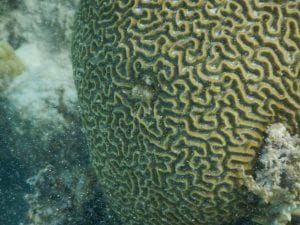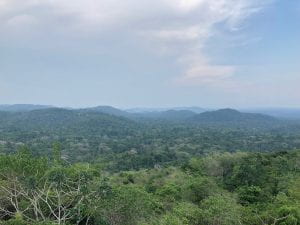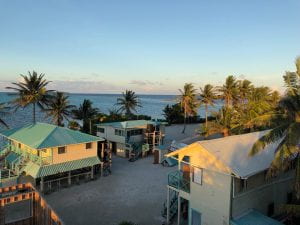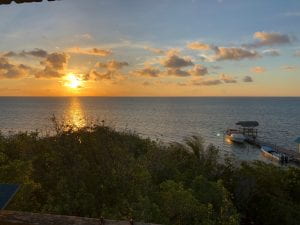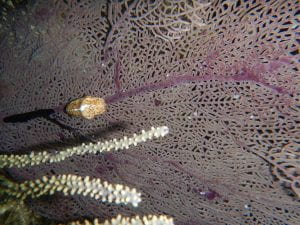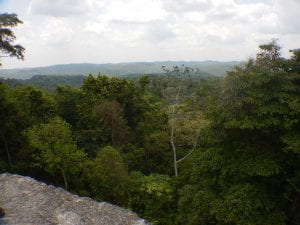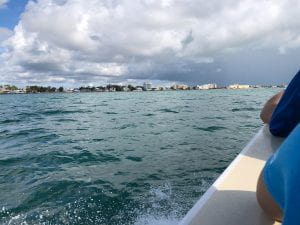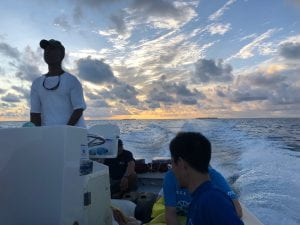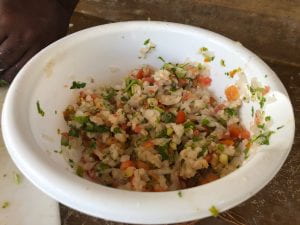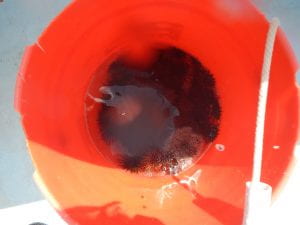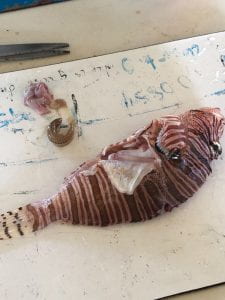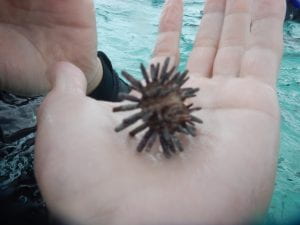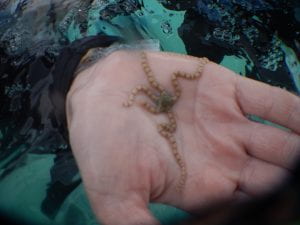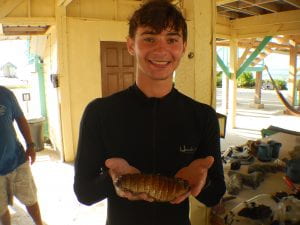The tropical rainforest and coral reef are similar in that they both survive on very nutrient-poor soil and ocean water respectively. This is because there’s very rapid nutrient cycling in the leaf litter of the rainforest and the mangroves near coral reefs.
I also noticed a lot of interesting interactions between species in these environments outside of simple predation. In the rainforest, there were organisms like ticks (which surprisingly don’t bother me anymore) that act as parasites and the Azteca ants that live symbiotically in Cecropia trees. And in the coral reefs, there were organisms like Christmas tree worms that extend deep inside the corals and stay there for life and clownfish that live symbiotically in anemones.
It’s hard to remember what I expected from the course after I already experienced it, but I guess that’s why we wrote our pre-departure blogs. In mine, I wrote that I was “anticipating a fascinating (but incredibly busy) two weeks.” I’d say this was pretty accurate to the trip, except it was even more fascinating and busy than I imagined.
One thing I certainly didn’t anticipate was our incredible experience at the ATM cave, which was most definitely my favorite part. I had no idea tourists were allowed to cave like that (i.e. swimming through small spaces and even scaling a small wall at one point). My least favorite part was probably running through the Mangroves of Death on our first day at the reef. The amount of mosquitoes there is unbelievable, and I was pretty impressed when three other students volunteered to go there for our marine debris collection.
One thing that I learned that I won’t forget is the Mayan history that we heard about. I was fascinated by the elaborate rituals performed by the priests. Another thing is that the only way to kill a tick is to sever its head from the rest of its body (which you can use your fingernails to do). The third thing that I learned and won’t be forgetting is to avoid fire coral!
Rainforest species seen: Homaeotarsus pallipes, Enema endymion, Pyrophorus noctilucus, Euchroma gigantea, Calopteron discrepans, Hegemona lineata, Eburia pedestris
Reef species seen: Millepora alcicornis, Millepora complanate, Millepora squarrosa, Kirchenpaueria halecioides, Dentitheca dendritica, Cassiopeia xamachana, Aurelia aurita

